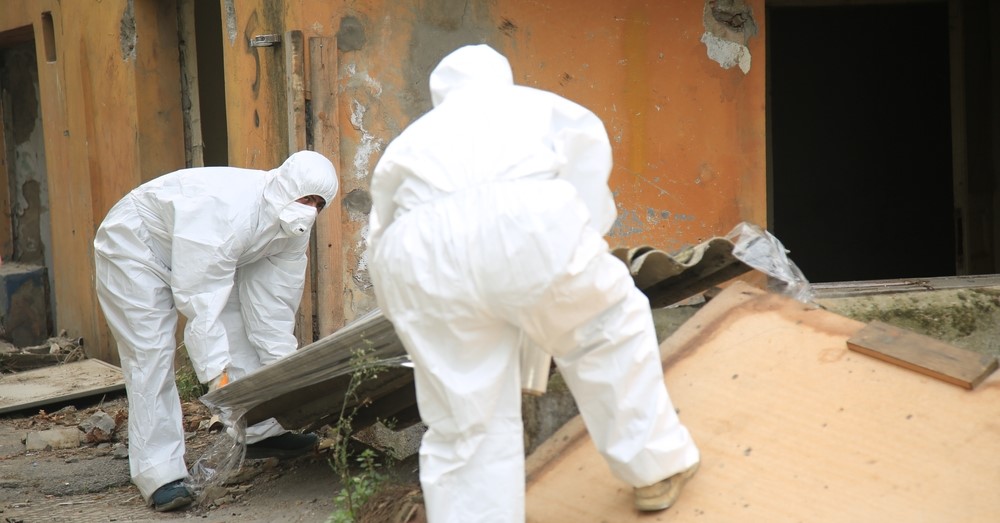
The Safe Way to Remove Hazardous Materials During Demolition
Demolition projects are not only complex but also potentially hazardous endeavors, necessitating meticulous planning and execution to safeguard the well-being of workers, residents, and the surrounding environment. Hazardous materials like asbestos, lead-based paint, and mold pose significant risks if not handled properly during demolition.
Hence, it’s imperative to adhere to stringent protocols to mitigate the potential for exposure and contamination. In this comprehensive guide, we’ll delve into the safe methods for removing hazardous materials during demolition, emphasizing best practices and regulatory standards essential for preserving health and safety.
Identifying Hazardous Materials in Demolition Project
Before beginning any Residential or Commercial demolition project, it’s crucial to conduct a thorough assessment of the structure to identify potential hazardous materials present. While identifying hazardous materials in demolition projects, common hazardous materials encountered in buildings include:
- Asbestos: Asbestos is a naturally occurring mineral fiber that was widely used in building materials before its health risks were recognized. It can be found in insulation, floor tiles, roofing materials, and other construction products.
- Lead-Based Paint: Lead-based paint was commonly used in homes and buildings before its use was restricted due to its toxicity, especially to children and pregnant women. Lead paint may be present on interior or exterior surfaces, such as walls, trim, and windowsills.
Lead paint removal during demolition is crucial to prevent health risks, especially for children and pregnant women. Proper procedures minimize the release of toxic particles, ensuring public safety. - Mold: Mold growth can occur in buildings with moisture or water damage, posing health risks to occupants. Mold can be found in areas such as basements, bathrooms, and around windows where moisture accumulates.
- Chemical Contaminants: Chemical contaminants, such as PCBs (Polychlorinated Biphenyls), mercury, and volatile organic compounds (VOCs), may also be present in building materials, particularly in older structures. These contaminants can pose health risks and require specialized handling and disposal.
While you identify these, Safe handling of hazardous demolition debris is essential to prevent exposure and contamination.
Developing a Hazardous Materials Management Plan
Once hazardous materials have been identified, it’s essential to develop a comprehensive hazardous materials management plan that outlines procedures for safe removal and disposal. The plan should include the following components:
- Site Assessment: Conduct a detailed site assessment to determine the extent of hazardous materials present and their location within the structure.
- Risk Assessment: Evaluate the potential risks associated with the removal of hazardous materials, including exposure to workers, occupants, and the environment.
- Engineering Controls: Implement engineering controls to minimize exposure during removal activities, such as containment barriers, negative air pressure systems, and ventilation.
- Personal Protective Equipment (PPE): Provide workers with appropriate PPE, including respirators, protective clothing, gloves, and eye protection, to prevent inhalation or contact with hazardous materials.
- Work Practices: Follow safe work practices for handling and removing hazardous materials, including wet methods to minimize dust generation, proper containment and disposal of waste materials, and decontamination procedures for workers and equipment.
- Training and Education: Provide training for workers on the proper handling and removal of hazardous materials, including recognition of hazards, use of personal protective equipment (PPE), and emergency response procedures.
Regulatory Compliance
When removing hazardous materials during demolition, it’s essential to comply with applicable federal, state, and local regulations governing hazardous waste management and occupational health and safety. Some key regulations to consider include:
- Occupational Safety and Health Administration (OSHA) Standards: OSHA has regulations that govern worker exposure to hazardous materials, such as asbestos and lead, and asbestos abatement procedures, including the Asbestos Construction Standard (29 CFR 1926.1101) and the Lead Standard for Construction (29 CFR 1926.62).
- Environmental Protection Agency (EPA) Regulations: The EPA regulates the management of hazardous waste under the Resource Conservation and Recovery Act (RCRA) and sets asbestos abatement procedures or standards for asbestos removal under the Asbestos Hazard Emergency Response Act (AHERA) and the National Emission Standards for Hazardous Air Pollutants (NESHAP).
- State and Local Requirements: Many states and local jurisdictions have additional regulations governing hazardous materials management and demolition activities. It’s important to check with the appropriate regulatory agencies to ensure compliance with all applicable requirements.
Conclusion
Removing hazardous materials during demolition requires careful planning, strict adherence to safety protocols, and compliance with regulatory requirements. By identifying hazardous materials, developing a hazardous materials management plan, and following best practices for safe removal and disposal, demolition contractors can protect the health and safety of workers, occupants, and the environment while ensuring the success of the demolition project.
Ready to safely remove hazardous materials from your next demolition project? Contact our experienced hazardous waste experts today. We’ll conduct a site assessment, develop a customized abatement plan, and ensure all regulatory requirements are followed to protect workers and the community. Call or email us at + 1 (626) 598-0657 or pantera091523@gmail.com. Managing hazardous materials like asbestos and lead paint can be complicated. Book a free consultation and let our professionals walk you through the removal process, from start to EPA-compliant disposal. We’ll also provide tips for choosing a qualified abatement contractor. Reach out to Robert Demolition Services.
FAQs:
Q: Is lead paint removal during demolition necessary?
A: Yes, lead paint removal is crucial to prevent health risks, especially for children and pregnant women. Proper procedures minimize the release of toxic particles, ensuring public safety.
Q: What are some common hazardous materials encountered in buildings during demolition?
A: Common hazardous materials include asbestos, lead-based paint, mold, and chemical contaminants like PCBs, mercury, and volatile organic compounds (VOCs).
Q: How can I ensure regulatory compliance when removing hazardous materials during demolition?
A: To ensure regulatory compliance, it’s essential to adhere to federal, state, and local regulations governing hazardous waste management and occupational health and safety, including OSHA standards and EPA regulations.
